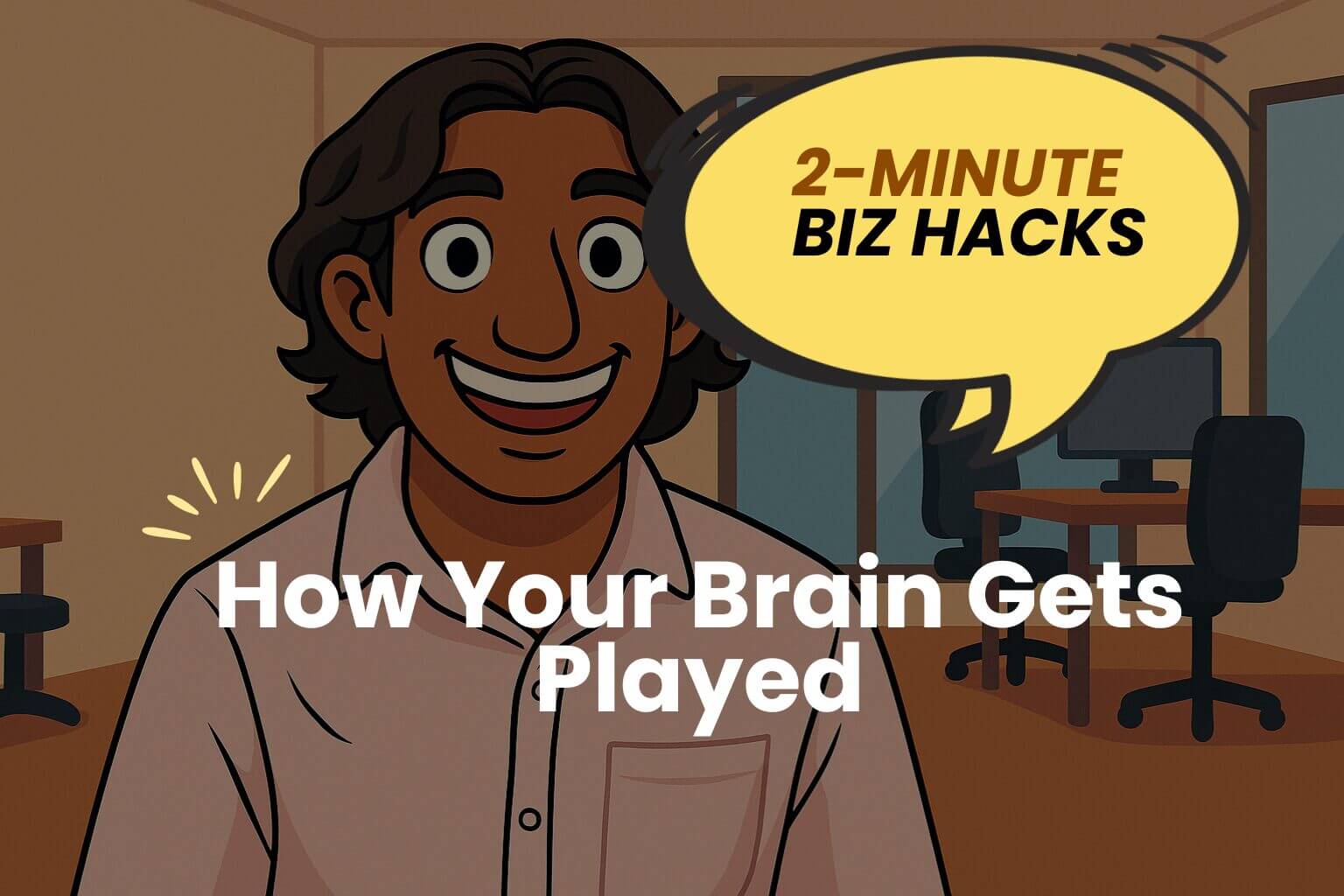
Hey, Arjun here.
This weekend, I was reading Predictably Irrational by Dan Ariely. What a book! Seriously, go read it. In fact, I might just start handing out copies at dinner parties 🙂
It’s packed with research and case studies on how people think they’re making rational buying decisions when, in reality, their choices are shaped by things they barely notice.
Which explains why I once paid $20 for a “handcrafted” oat milk latte but will argue for 15 minutes about a $0.99 app subscription.
One insight practically jumped off the page and smacked me in the face: People don’t make buying decisions logically. They make them based on context and sometimes optics…
Let me explain.

How Your Brain Gets Played (And You Don’t Even Realize It)
Imagine you’re looking at two software options:
💻 Product A – Basic features, $600/year
💻 Product B – More advanced features, $900/year
You pause. Is the extra $300 worth it? Tough call.
Then, a third option appears:
💻 Product C – Almost the same as Product B, but with a few small downgrades, priced at $850/year
Suddenly, Product B looks like the better deal. For just $50 more than Product C, you get noticeably better features. The price gap is small, but the difference in value feels big.
Your brain thinks it just made the smartest buying decision.
Except…you got played.
That’s the Decoy Effect.
A cognitive bias where an additional option subtly influences how we perceive value, making one choice feel like the obvious winner, even though nothing fundamentally changed.
And here’s the kicker: every successful brand uses this.
Apple does it with iPhones. You think you’re picking between models based on features, but Apple has already nudged you toward the Pro version. How? The base model is “just okay,” the Pro is positioned as the best value, and the Ultra? Overkill for most people.
So, the Pro feels like the smart choice. You think you’re choosing. But really, you’re being nudged.
And it’s not just pricing alone. Every buying decision is influenced by things buyers don’t consciously notice.
Before someone purchases a product, they run through a subconscious checklist:
Does this solve my problem?
Does this seem worth the price?
Do I trust this brand?
Is this easy to buy?
It’s a mix of emotions, perceived effort, urgency, and subconscious comparisons that shape the final “yes” or “no.”
So, What Do Buyers Really Care About?
1. First Impressions Decide Everything. If your product, website, or sales pitch doesn’t grab attention in five seconds, your customers are already looking elsewhere.
2. Customers Buy Outcomes, Not Features. No one cares that your tool has “AI-powered automation.” They care that it saves them 10 hours a week or helps them close deals faster. Sell that.
3. Price is Perception. A $99 product can feel overpriced if the value isn’t crystal clear, while a $10,000 offer can seem like a bargain if customers believe they’re getting $50,000 worth of impact.
4. The Experience Is the Sale. Online, you don’t have a sales rep convincing people. Your real sales team is YOUR onboarding flow, follow-up emails, and ridiculously smooth checkout process. If any of those feel clunky, the sale is gone.
What’s Worked for Me?
If I had to boil down a few key takeaways from my journey, here’s what has truly made a difference:
→ A Landing Page That Makes Buying Easy.
When people visit a website, they don’t want to go on a scavenger hunt. Everything they need should be right there, whether it’s a product, a service, or a key piece of information. The less thinking required, the faster the conversion happens.
→ Frictionless Conversations.
Wanna talk to an expert? One sign-up form, and boom, and your customers should be in. No endless scheduling, no back-and-forth. People want speed and clarity, so make it dead simple to get answers.
→ Better Products Start With Better Listening.
If your team isn’t hearing real customer feedback every week, they don’t have skin in the game. They’re just building in the dark.
The best products aren’t born in strategy decks or sprints. They come from listening. From knowing what real people are struggling with. Sharing raw, unfiltered feedback gives your team something to care about.
It creates urgency.
It puts names, stories, and stakes behind every decision.
And when that happens? You don’t just build features. You build things that actually matter.
So, tell me, what’s one thing you’ve tweaked in your sales flow that actually worked?
Shoot me a note. I’d genuinely love to hear it.
P.S. If you’re optimizing your sales flow based on how buyers actually make decisions, don’t let your backend slow you down. When the conversions start rolling in, you’ll want your business structure to be just as frictionless. That’s where doola comes in.




